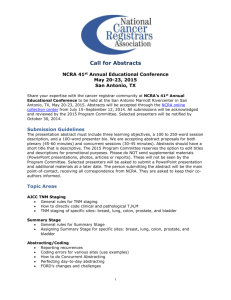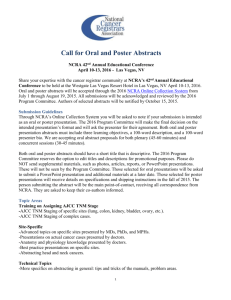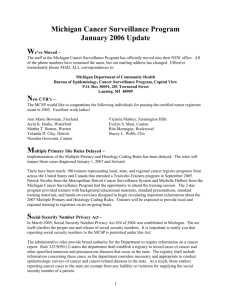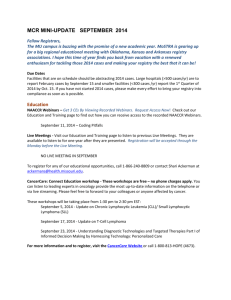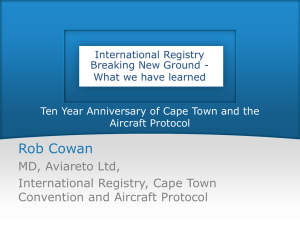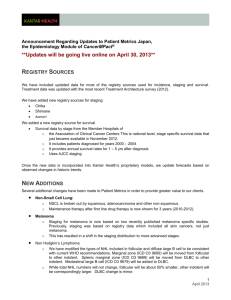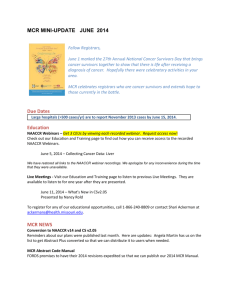Submission Guidelines Call for Presentation Abstracts NCRA 40th
advertisement
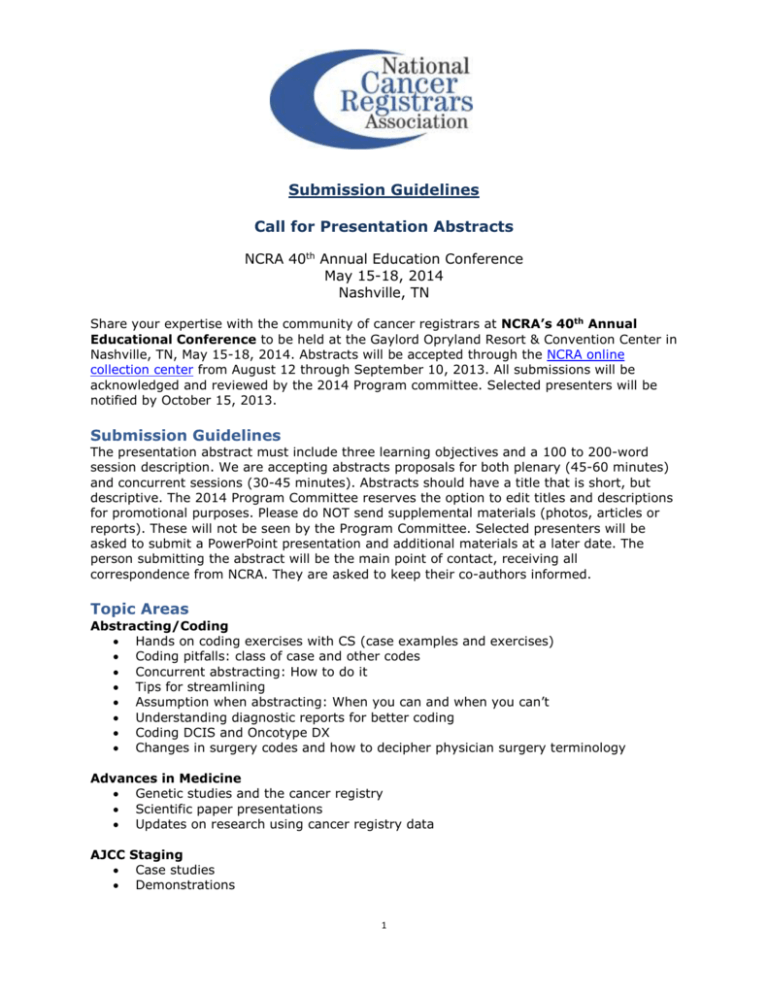
Submission Guidelines Call for Presentation Abstracts NCRA 40th Annual Education Conference May 15-18, 2014 Nashville, TN Share your expertise with the community of cancer registrars at NCRA’s 40th Annual Educational Conference to be held at the Gaylord Opryland Resort & Convention Center in Nashville, TN, May 15-18, 2014. Abstracts will be accepted through the NCRA online collection center from August 12 through September 10, 2013. All submissions will be acknowledged and reviewed by the 2014 Program committee. Selected presenters will be notified by October 15, 2013. Submission Guidelines The presentation abstract must include three learning objectives and a 100 to 200-word session description. We are accepting abstracts proposals for both plenary (45-60 minutes) and concurrent sessions (30-45 minutes). Abstracts should have a title that is short, but descriptive. The 2014 Program Committee reserves the option to edit titles and descriptions for promotional purposes. Please do NOT send supplemental materials (photos, articles or reports). These will not be seen by the Program Committee. Selected presenters will be asked to submit a PowerPoint presentation and additional materials at a later date. The person submitting the abstract will be the main point of contact, receiving all correspondence from NCRA. They are asked to keep their co-authors informed. Topic Areas Abstracting/Coding Hands on coding exercises with CS (case examples and exercises) Coding pitfalls: class of case and other codes Concurrent abstracting: How to do it Tips for streamlining Assumption when abstracting: When you can and when you can’t Understanding diagnostic reports for better coding Coding DCIS and Oncotype DX Changes in surgery codes and how to decipher physician surgery terminology Advances in Medicine Genetic studies and the cancer registry Scientific paper presentations Updates on research using cancer registry data AJCC Staging Case studies Demonstrations 1 Anatomy In-depth clinical presentations on major sites Central Cancer Registries Central registry processes Quality assurance in the central cancer registry Coding for central registries Lessons learned: implementation of meaningful use stage 2 for physicians Clinical Trials Clinical trial studies that can be done by small community facilities Examples/uses of cancer registry data CoC CSv2 How to interpret the new standards How to meet standards, including assessment of treatment planning, hospice/palliative care/navigator program, and breast program Quality improvement studies to meet standards Technology uses for cancer conferences Advanced site specific staging and abstracting Demonstrations of staging CSv2 coding strategies, problems, and solutions Neoadjuvant treatment/staging Data Utilizing cancer registry data Preparing presentations, including graphs and statistical reports Diseases/Treatments Physician-presented sessions on cancer treatments and how they relate to the coding Stem cell transplants (bone marrow/cord blood) Hematopoietic diseases Hematopoietics New MP Rules Case finding hematopoietic Hematopoietic coding Leukemia/lymphoma diagnosis testing, treatments, and recurrence/progression ICD-10-CM Updates for cancer registrars Informatics Primer on informatics for cancer registrars Advanced training on informatics Pediatrics Pediatric cancers 2 Professional Development/Management Addressing registry staffing issues: shortages, recruitment, training, aging of the workforce, continuing education, benefits Managing a registry: best practices Working remotely: what the independent contractor needs to know Work distribution in the registry: using certified and noncertified staff Starting your own business Quality Quality control and improvement Specific Sites Physician-presented sessions on specific sites, including guidelines for treatment, staging, and prognostic factors. Will consider sites other than the top five, such as brain, head, and neck. 3
